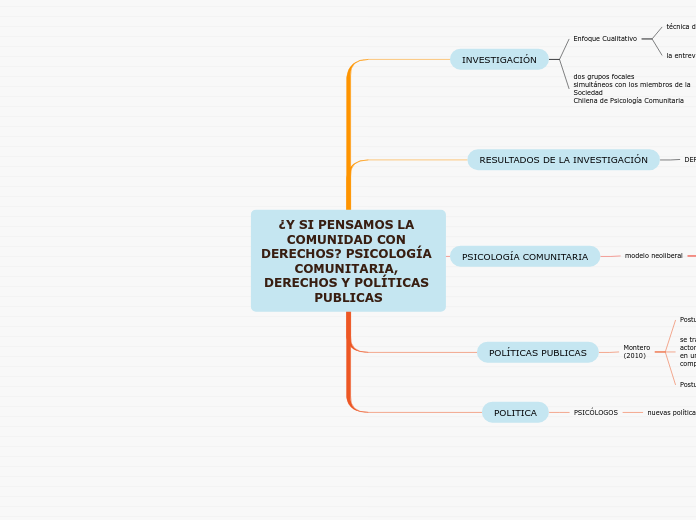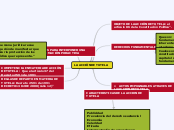¿Y SI PENSAMOS LA COMUNIDAD CON DERECHOS? PSICOLOGÍA COMUNITARIA, DERECHOS Y POLÍTICAS PUBLICAS
To name your story, you have to think about the overall message and what you want your audience to understand from the story. Also, make it relevant and easy to remember.
POLITICA
The ending of a story is essential. We all know that if the ending is weak, what happened before loses its importance. So make it unpredictable, but fair. A resolved ending answers all the questions and ties up any loose threads from the plot.
PSICÓLOGOS
This is the moment when the main character surpasses the last obstacle and finally faces their greatest challenge.
The climax usually follows one of these patterns:
- realization
- resolution
- choice
Type in your answer.
nuevas políticas y programas
incorporen nuevos actores a la acción y reflexión
POLÍTICAS PUBLICAS
The middle of the story is where you add layers of complications that will lead to the end. Reveal more about the character's journey. Did their personality go through changes? How did they overcome the challenges? And as you build up the story’s central conflict, make it more personal to that character. Also, from the middle act, you have to lead into the final act.
Montero
(2010)
Each story has a main character and that character usually needs to solve a problem or challenge. The character's challenge is the one that creates tension throughout the story.
Type in any other challenges which other characters in the story need to face.
(participación, incidencia pública,
derechos
se trabaja con
actores sociales en un escenario complejo
relación dialógica entre expertos y
comunidad.
“acción participativa” como
metodología de intervención, de transformación
y de construcción de conocimientos.
Postula
In most stories, there are 3 challenges. The number 3 is a mystical number symbolizing completeness. Try to come up with interesting challenges with which your character needs to struggle.
See a few examples below:
- turns into a werewolf at night
- is sent back in time
Incorporar
la investigación “acción participativa”
PSICOLOGÍA COMUNITARIA
In the beginning of the story (or the exposition), you will need to introduce the setting and characters. You might also want to introduce the main conflict. This part of the story is important because it gives the reader necessary background information and maybe even a first insight into a character’s personality.
modelo neoliberal
The setting (time & place) of a story can change throughout the plot.
Sensory details include sight, sound, touch, smell, and taste. These details are important because they create depth in your setting.
See a few examples below:
- the smell of fresh bread
- the scent of freshly cut grass
- rain falling onto the windshield etc.
la creciente profesionalización
de la organización comunitaria
The weather is an important element in your story because it can highly influence the ambiance and the mood of the characters.
la atención disminuida y la
tergiversación de los movimientos sociales en el
contexto teórico-práctico de la educación de las
comunidades
The most affected character is the main character. Write down here if he/she is affected by these weather conditions in any way. For example, if they lost a family member or their home during a hurricane, etc.
Consta de
corte positivista-cuantitativo
Tendencias
The time of the story can also change. It can describe the event of a single day or can include an entire year's plot. Anyway, don't forget to mention it.
la evidencia
como un proceso dominante para guiar la acción profesional
RESULTADOS DE LA INVESTIGACIÓN
DERECHOS
5. Derecho a recibir intervenciones de calidad
4. Derecho a la autonomía de la comunidad
3. Derecho al respeto y reconocimiento de la
comunidad
2. Derecho a la participación y toma de decisiones
1. Derecho a la información clara y transparente
INVESTIGACIÓN
dos grupos focales
simultáneos con los miembros de la Sociedad
Chilena de Psicología Comunitaria
derechos
fundamentales para proceso de intervención
que pretenda incluirlos en sus acciones de cambio
Subtopic
Enfoque Cualitativo
la entrevista en profundidad
entrevista a un líder comunitario de gran
trayectoria en el ámbito social y comunitario
técnica del grupo focal
certificado de aprobación ética del
Comité de Ética Institucional de la Universidad
de Santiago de Chile
certificado de seguimiento o auditoría










